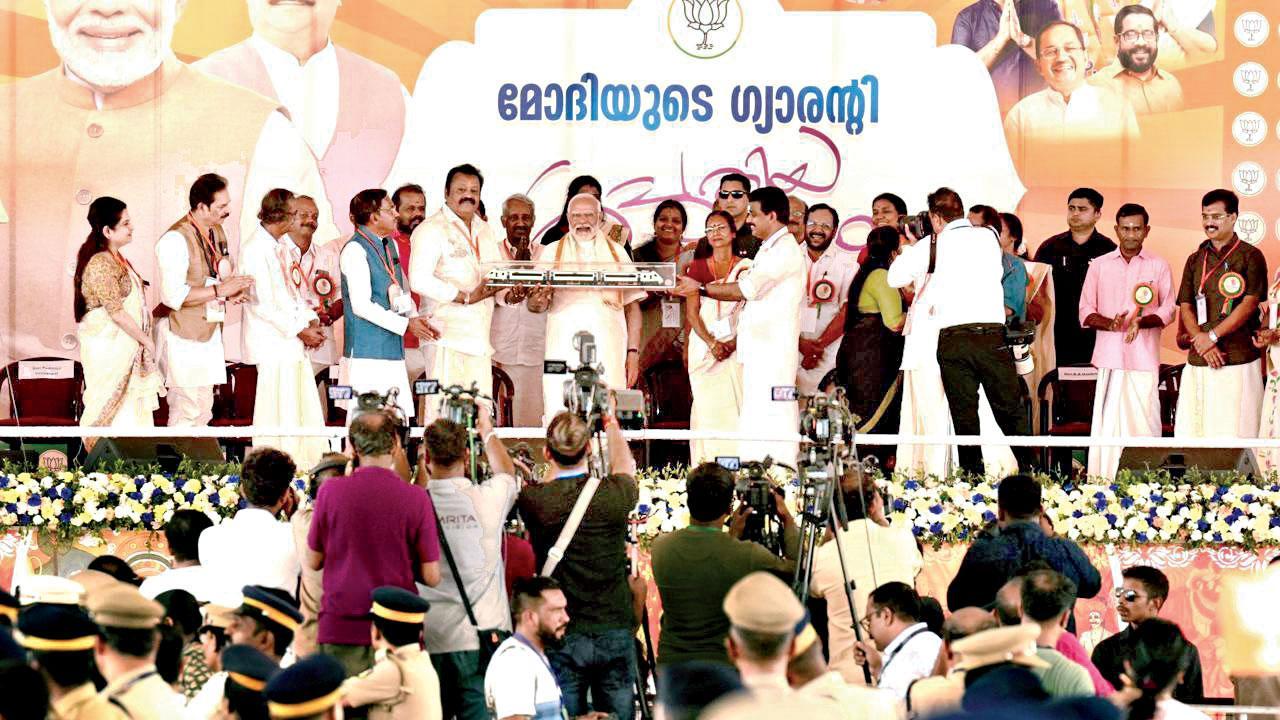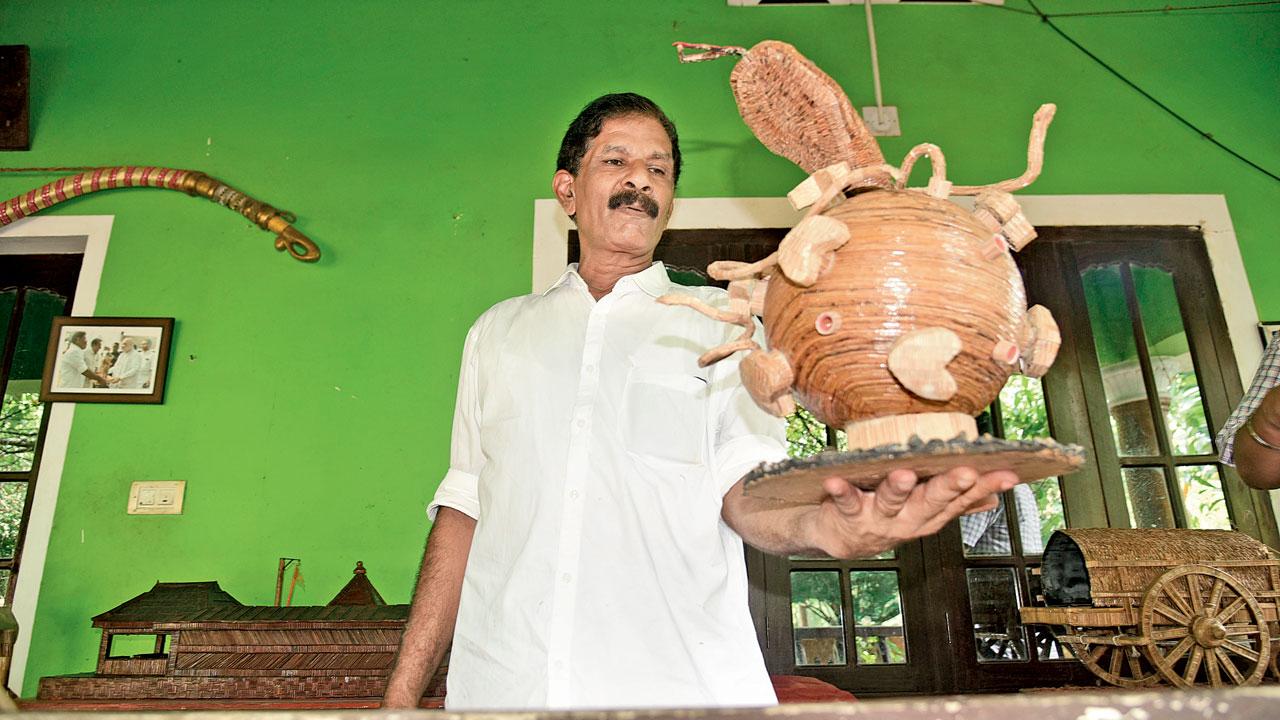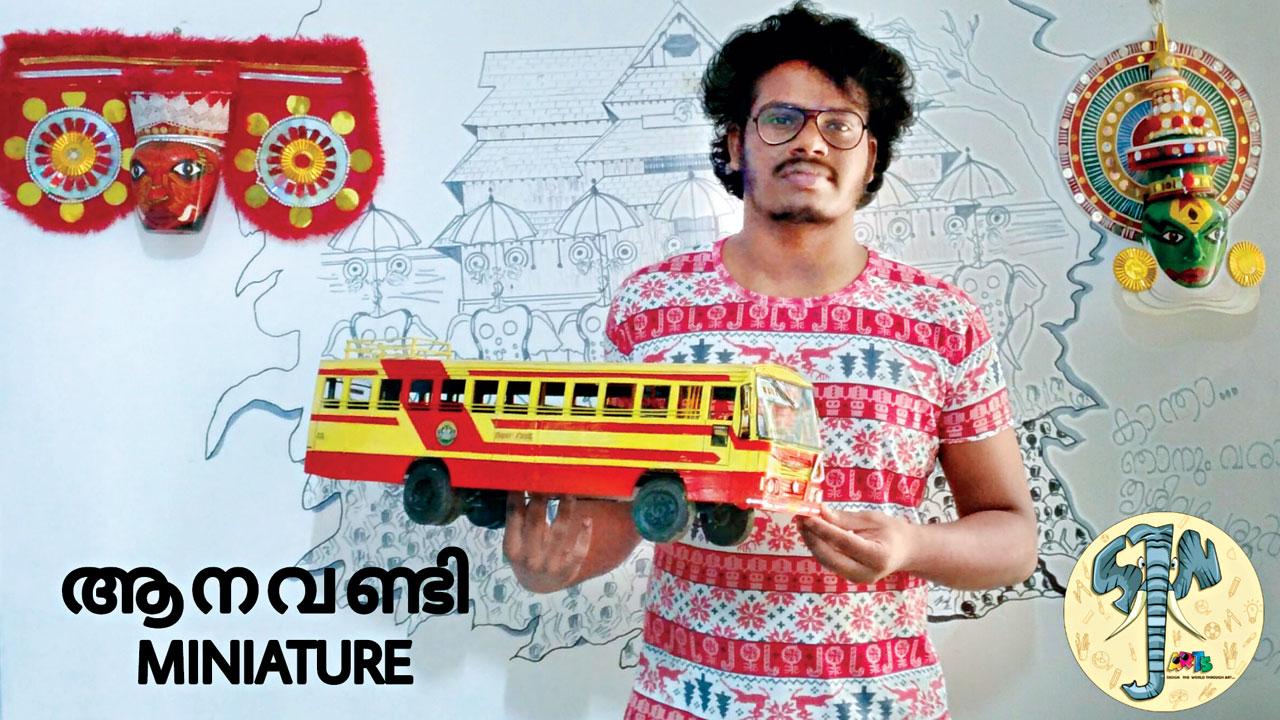Two artists who create intricate models with their hands have caught the PM’s attention in the midst of the election fray

Prime Minister Narendra Modi with a model of the Vande Bharat train made by Shijin T Santhosh
While the battle for votes rages on and parties slug it out to win the public’s approval at any cost, two artists from Thrissur in Kerala are quietly working on art that has won them praises from the people and the politicians alike.
mid-day met one of them, 58-year-old Sreekumar P, at his residence on Ambalur Road. The house resembles a museum or an art gallery, with handmade pieces of art dotting the rooms all over. A bullock cart with moving wheels and a brake to stop it, a paddy measure, a lamp, a model of a mosque, models of musical instruments and portraits of politicians like former President APJ Abdul Kalam and Prime Minister Narendra Modi.
What sets his art apart, however, is the material he uses; coconut leaf sticks, hay, coconut leaves and dry sticks, which he collects from his own backyard as well as the homes of his neighbours, shaped and held together with glue.
“I started doing this around 30 years ago,” says the self-taught artist. “Initially, my family members were irritated at me spending nights working on my art. I’d be up till early morning, as I would make these models after I came home from work. Today, my wife makes coffee for me to stay awake and personally ensures that all my creations are dust free.”

Sreekumar P’ with his model of the COVID-19 virus. Pic/Atul Kamble
He adds that though he has a fertile imagination, he also relies on memory to recall an image that may serve as his next work. The mosque, for example, is one that he saw in a photograph. He also makes artwork connected to current issues, like a model of the COVID-19 virus that he made for the Kerala Health Department to help spread awareness.
Sreekumar recently made a portrait of Prime Minister Narendra Modi, which he handed over to the PMO. The very next day, he received two calls from the PMO, asking about his art work, time spent on making the portrait and other details. He has also received a letter of appreciation from Kalam, and has won awards for his work as well.
“I told the PMO about my wish for a village artisan museum in Thrissur. There are many artists like me who use materials found in the villages to make exquisite artworks. If a museum is made to house their works, it would make their works accessible to many. If the government makes the museum visits a ticketed entry, the money from the proceeds can easily be used to provide more work to the artists. Not only that, but artists could be ensured a regular income, and the government could consider providing a pension to artists,” Sreekumar says.
Sreekumar is also a lyricist and wrote a welcome song sung for Modi when the PM visited Kerala, that was sung by singer, Vaikom Vijayalakshmi. “I have not focused on writing lyrics for films as that is a time-consuming process. Kerala has over 100 artists like me. No government supports us. When I told Modi the need to build a museum to showcase the art of village artisans and expressed my wish for a museum for our art works, Modi understood it.”

The other artist we meet is Shijin T Santhosh, 25, currently pursuing a Master’s degree in Graphic Design at the International School of Creative Arts (ISCA) in Ernakulam, Kerala. Santhosh created a miniature model of the Vande Bharat train, which reached Modi through the BJP candidate for Thrissur, cine actor Suresh Gopi, during his last election campaign in KunnamKulam, Thrissur on April 15. Santosh is proficient in drawing, painting, sculpting and miniature modelling and was inspired by his late father.
“My father, Santhosh Kumar, was a retired Indian Air Force personnel who specialized in crafting aircraft models. He conducted workshops and classes on model-making in various educational institutions after his retirement in 2022, and I accompanied him, learning the craft first-hand. My father’s guidance led me to create my first miniature model, a KSRTC Bus, followed by cars and eventually the Vande Bharat Train,” he says.
The Vande Bharat model was made using foam sheet, shirt buttons, pen caps, springs, insulation tape and printed stickers for the train’s logo. It was affixed on a track made from foam sheet, and the total expense came up to Rs 4,000. “I am thrilled with Suresh Gopi sir’s enthusiasm and commitment to deliver the model to the Prime Minister,” he said. Santhosh, however, is still waiting for a response from the PMO about his work.
 Subscribe today by clicking the link and stay updated with the latest news!" Click here!
Subscribe today by clicking the link and stay updated with the latest news!" Click here!










